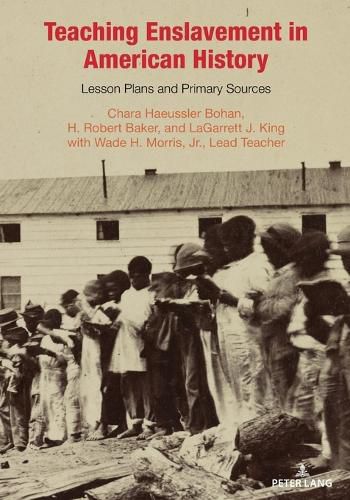Readings Newsletter
Become a Readings Member to make your shopping experience even easier.
Sign in or sign up for free!
You’re not far away from qualifying for FREE standard shipping within Australia
You’ve qualified for FREE standard shipping within Australia
The cart is loading…






This title is printed to order. This book may have been self-published. If so, we cannot guarantee the quality of the content. In the main most books will have gone through the editing process however some may not. We therefore suggest that you be aware of this before ordering this book. If in doubt check either the author or publisher’s details as we are unable to accept any returns unless they are faulty. Please contact us if you have any questions.
Teaching Enslavement in American History provides classroom teachers with the resources necessary to navigate one of the most difficult topics in any history course. This volume is the product of a collaboration between three university professors and a team of experienced middle and high school teachers. Its nine chapters include the context for topics like the middle passage, the Constitution’s position on enslavement, African cultural retention, and resistance to enslavement. The resources include 18 lesson plans and dozens of short primary and secondary sources modeled on document-based questions and the inquiry design model.
Real teaching requires courage, a deep understanding of the complexity of the subject matter, and skillful use of primary sources. Rather than teaching students what to think, Teaching Enslavement in American History pushes students to learn how to think: empirical argumentation, source evaluation, understanding of change-over-time, and analysis of historical context. The lessons in this book ask students to read, analyze, and contextualize a variety of primary sources, to identify the limitations of these sources and to articulate historical contradiction where it occurs. At the heart of this book is the belief that historical consciousness leads to societal change. Teaching about enslavement is not merely about teaching a curriculum, it is about molding citizens who will lead our democracy in its journey to become a more perfect union.
$9.00 standard shipping within Australia
FREE standard shipping within Australia for orders over $100.00
Express & International shipping calculated at checkout
This title is printed to order. This book may have been self-published. If so, we cannot guarantee the quality of the content. In the main most books will have gone through the editing process however some may not. We therefore suggest that you be aware of this before ordering this book. If in doubt check either the author or publisher’s details as we are unable to accept any returns unless they are faulty. Please contact us if you have any questions.
Teaching Enslavement in American History provides classroom teachers with the resources necessary to navigate one of the most difficult topics in any history course. This volume is the product of a collaboration between three university professors and a team of experienced middle and high school teachers. Its nine chapters include the context for topics like the middle passage, the Constitution’s position on enslavement, African cultural retention, and resistance to enslavement. The resources include 18 lesson plans and dozens of short primary and secondary sources modeled on document-based questions and the inquiry design model.
Real teaching requires courage, a deep understanding of the complexity of the subject matter, and skillful use of primary sources. Rather than teaching students what to think, Teaching Enslavement in American History pushes students to learn how to think: empirical argumentation, source evaluation, understanding of change-over-time, and analysis of historical context. The lessons in this book ask students to read, analyze, and contextualize a variety of primary sources, to identify the limitations of these sources and to articulate historical contradiction where it occurs. At the heart of this book is the belief that historical consciousness leads to societal change. Teaching about enslavement is not merely about teaching a curriculum, it is about molding citizens who will lead our democracy in its journey to become a more perfect union.